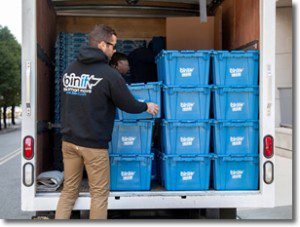(FS7) Maintaining Inventory in Your Franchise – Front and Back of House

It all comes down to numbers. You’ll need to know how much is going and how fast so you can maintain your franchise inventory with as few things as possible going bad. During training with your franchisor, you should learn some things about keeping your inventory stocked and fully functional. If your franchise doesn’t have inventory, feel free to skip this section.
Back of House at Your Franchise
 This is also called the stockroom where all of your stores extra goodies live until it’s time to move to the shelves. It’s called the back of house because usually it’s literally the back of your business building. You’ll be expected to keep it organized and to know what you have in back. If you’re working in retail, it will be imperative to know what you have and where it is when a customer asks about a certain time. If you have food products, organization will be all the more important in order to maintain freshness and to keep food from going bad, getting moldy, and spreading germs.
This is also called the stockroom where all of your stores extra goodies live until it’s time to move to the shelves. It’s called the back of house because usually it’s literally the back of your business building. You’ll be expected to keep it organized and to know what you have in back. If you’re working in retail, it will be imperative to know what you have and where it is when a customer asks about a certain time. If you have food products, organization will be all the more important in order to maintain freshness and to keep food from going bad, getting moldy, and spreading germs.
As the owner of a franchise, you should have some kind of inventory system in place that you are able to teach new employees and staff members when they come in. The system should be easily maintainable and enforced to keep the backroom organized, track inventory, and monitor ordering. It should also be organized by type of products such as:
Dry Storage
This term is used to refer to anything that does not require a refrigerator to be stored at your franchise, even if it’s a wet food. Here are some practices for dry-food storage:
- Product storage must be at least six inches off the floor. The shelf must be clean and nonporous while also providing enough room to keep the floor underneath clean of contamination and rodents.
- Do not store any product under exposed water lines, sewer pipes, or besides sweating walls.
- Poisonous materials must be stored far away from edible materials. This means soaps, pesticides, detergents, anything that you may have learned to keep away from your children (or food) at home should also be kept away from your food storage at work.
- All opened packages must be in closed containers with labels containing the product inside, the open date, and the toss date.
- Schedule regular cleaning of the storage areas.
- Date all received merchandise and rotate what is on the shelf. Many merchants use the motto FIFO, which is “First In, First Out”.
- Place most frequently bought items on a lower shelf near the front of the store for easy access.
- Store heavy packages or products on low shelves.
- Don’t store any products above shoulder height.
Refrigerated Storage
Here are some tips for your cold storage units at your franchise:
- Place items that need to be refrigerated in the fridge as soon as possible.
- Enclose food that has been removed from its original packaging should be placed in clearly marked, sealed containers. Mark ALL containers with a label stating what they are, when they were opened, and when they should be tossed. All storage units should be sanitized and covered.
- Do not store food in contact with ice or water.
- Check refrigerator and freezer temperatures minimally twice a day, once in the morning and once in the evening.
- Store all foods in a place that encourages free circulation of cool air.
- Never store food on the floor.
- Check food temperature standards for keeping foods and be sure to follow them.
- Schedule regular cleaning of the fridge equipment.
- Establish preventative-maintenance on equipment.
- Establish a safe stacking system in your fridge with most dangerous food on the bottom of the shelf and safest food on the top (such as red meat bottom shelf, fruit and cheese at top).
Front of House at Your Franchise
The front of house is your store. This is what all customers will see if you’re working a retail franchise. It is just as important to keep your front of house as organized as your back of house because you want your customers to look at the room and be enticed to walk in. If your store is dirty or unorganized, an individual is much less likely to approach. It’s also important to keep the front of house organized so your consumers can have an easier time finding what they need. Having a tough time finding what they need, especially if they know it’s there, can end with a negative impression of the store and possibly even the brand.
 If you’re a restaurant franchise than your front end is going to be handled a bit differently than a retail unit. However one thing still stays the same: your front end is what your customer will see and base their first opinions on.
If you’re a restaurant franchise than your front end is going to be handled a bit differently than a retail unit. However one thing still stays the same: your front end is what your customer will see and base their first opinions on.
Retailers have to think ahead when they’re planning their front end. Shelves have to be stocked to look attractive and entice potential customers, especially if you’re in a strip or mall of some kind where consumers walking in will almost solely depend on how enticed they are by what they are seeing. Even the way things look placed inside a refrigerator will change how your consumer feels about your store and how cluttered (or clean) it looks.
Here are some tips to keep your store in the best shape possible:
- Have a planogram system at your franchise and follow it.
- Keep shelves and merchandised stocked, clean, and dust-free.
- Use product rotation and place the older products in front to get rid of them before the newer products.
- Price like-items similarly.
- Allow enough space on displays and shelves so they agree with local laws.
- Use signage that is acceptable to your franchisor and your system.
- Keep floor clean of boxes and other rubbish unless it’s a design concept.
It is a franchisee’s responsibility to comply with local laws, including accessibility laws for the disabled. That means your store must accommodate any disabled people by keeping the shelves far enough apart to grant entry to them. As a general rule, think of a wheelchair when placing your shelves and make sure minimally a regular-sized wheelchair can fit through. Usually that’s a good enough rule of thumb for most. Also don’t congest your store with so many displays that it will make it hard to navigate or block off any fire exits.
Read More From Franchise Series 7:
- Getting Your Franchise Started
- Common Site Options for Franchising Your Business
- A Closer Look at Some Sites for Franchise
- Dual Branding as a Franchise Option
- What Constitutes a Site as “Good” for Your Business?
- Understanding Business Layout and Encroachment
- Securing a Place for Business and Building Yourself In
- Setting Up Your Franchise with Contractors and Supplies
- Options for Franchise Merchandise and Supply Ordering
- Procedures for Receiving Merchandise at Your Franchise
- Training Yourself Before You Open Your Franchise
